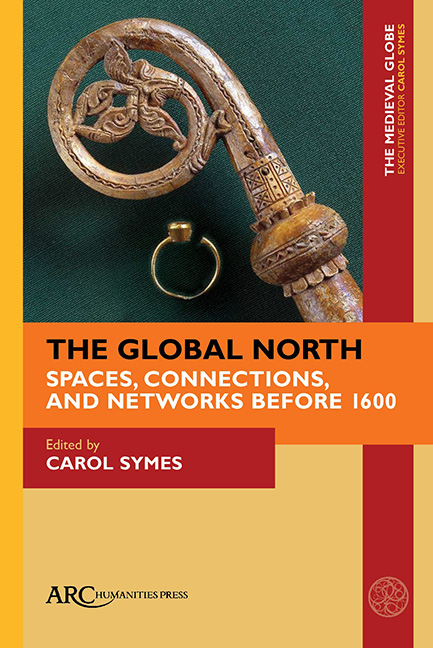Book contents
- Frontmatter
- Contents
- List Of Illustrations
- Introduction: Exploring the Global North, from the Iron Age to the Age of Sail
- Contesting Marginality: The Boreal Forest of Middle Scandinavia and the Worlds Outside
- Archaeological Evidence for Staraya Lagoda as an Early Scandinavian Emporium of the Global North
- Gunhild’s Cross and the North Atlantic Trade Sphere
- The Far North in the Eyes of Adam of Bremen and the Anonymous Author of the Historia Norwegie
- The Multi-Layered Spatiality of the Global North: Spatial References and Spatial Constructions in Medieval East Norse Literature
- Military Migration in the Baltic Sea Region, ca. 1400–1620
- Old and New Land in the North and West: The North Atlantic on the Medieval Globe around 1500
- Index
Introduction: Exploring the Global North, from the Iron Age to the Age of Sail
Published online by Cambridge University Press: 20 January 2022
- Frontmatter
- Contents
- List Of Illustrations
- Introduction: Exploring the Global North, from the Iron Age to the Age of Sail
- Contesting Marginality: The Boreal Forest of Middle Scandinavia and the Worlds Outside
- Archaeological Evidence for Staraya Lagoda as an Early Scandinavian Emporium of the Global North
- Gunhild’s Cross and the North Atlantic Trade Sphere
- The Far North in the Eyes of Adam of Bremen and the Anonymous Author of the Historia Norwegie
- The Multi-Layered Spatiality of the Global North: Spatial References and Spatial Constructions in Medieval East Norse Literature
- Military Migration in the Baltic Sea Region, ca. 1400–1620
- Old and New Land in the North and West: The North Atlantic on the Medieval Globe around 1500
- Index
Summary
WHEN JANET ABU-LUGHOD outlined the contours of a medieval “world system” in 1989, she located most of its “circuits” in the southern hemisphere (see map 1.1). In the decades since the publication of this influential work, changing trends in research, novel approaches to evidence, and collaborative methodologies have complicated, enriched, and expanded this picture, geographically and chronologically. We now know that many more networks linked the regions of Afro-Eurasia, and long before the century of the Mongol conquests (ca. 1250–1350).
It is also becoming clear that any attempt to apprehend the extent and density of these networks—see, for example, map 1.2—will be inadequate and provisional, given the pace and reach of ongoing scholarship. Even this broad hemispheric view is already too limited. For one thing, it does not allow us to follow the ancient movements of colonists from Southeast Asia into the Pacific Ocean and, thereafter, across to the islands of Polynesia—and beyond—in the first millennium of the Common Era. For another, it does not capture the short-lived or seasonal settlements of Norse voyagers on the shores of what is now Newfoundland and (perhaps) other sites along the North American coastline; nor the interactions among peoples of both hemispheres. Instead, only an inadequate, interrupted oval around the arctic indicates the documented and potential interconnectivities of the circumpolar North: the contact zone spotlighted in this special issue of The Medieval Globe.
In these pages, generous scholars from a range of disciplines have joined to explore the boreal globe from the northern Iron Age (especially from the fourth century ce) to the early seventeenth century, offering fresh perspectives that cross the frontiers of regional and national historiographies, as well as conventional periodizations, in order to present new perspectives on migration, trade, material culture, technology, cultural exchange, global imaginaries and epistemologies, and the interactions of humans with their environments.
The first article is a remarkable introduction to all of these phenomena. In “Contesting Marginality: The Boreal Forest of Middle Scandinavia and the Worlds Outside,” Karl-Johan Lindholm and colleagues have combined the results of their ongoing projects to propose a new narrative of historical and technological developments in inland Scandinavia—based entirely on environmental, archaeological, material, and genetic evidence.
- Type
- Chapter
- Information
- The Global NorthSpaces, Connections, and Networks before 1600, pp. 1 - 8Publisher: Amsterdam University PressPrint publication year: 2021



